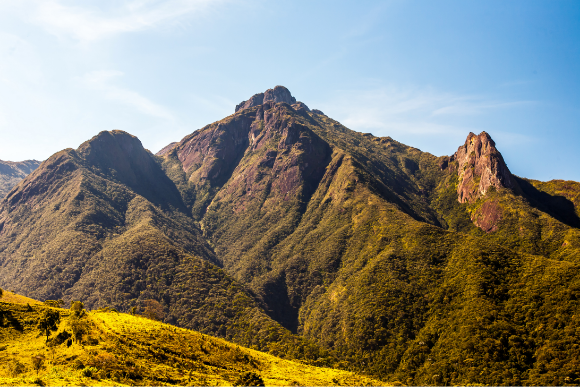Plate tectonics is a scientific theory first proposed in the early 20th century by German scientist Alfred Wegener. Initially met with great skepticism, the idea that massive rock plates could drift and move across the Earth's surface seemed inconceivable at the time. Remarkably, while astronomers had been studying Jupiter's moons and Saturn's rings for centuries, the depths of our own planet remained a mystery.
Unlike in Wegener's era, modern geologists have the tools to explain the mechanism driving plate tectonics, thanks to a clearer understanding of Earth's deep structure. The plates move atop the viscous mantle because they have a lower density than the layer of hot material found deeper within it, allowing them to float according to the principle of buoyancy. 2 View gallery The movement of convection cells in Earth's mantle ( Photo: Science Photo Library ) The Circular Flow of Mantle Currents A new study published in Nature adds another dimension to plate tectonic theory, suggesting that the ancient breakup of the supercontinent Gondwana—one of the two landmasses that formed after the disintegration of the first supercontinent, Pangaea—generated waves of motion currents.

These currents move in circular patterns through Earth's mantle, slowly propagating over tens of millions of years toward continental interiors, contributing to the shaping and sculpting of the surface. The turbulent boundaries of tectonic plates play a major role in shaping Earth's topography. The most well-known example is plate collisions, which have formed many mountain ranges, such as the Himalayas, where the Eurasian and Indian plates converge.
The border regions between plates exhibit distinct landscapes that reflect their type of movement—whether converging or diverging. In contrast, the central parts of tectonic plates consist of stable, immobile rock masses, fundamentally different from the dynamic boundary regions. Yet, scientists have long puzzled over the presence of significant geological structures deep within continents, far from tectonic plate boundaries, where such features would not be expected.
Examples include the steep, massive highland plateaus of the Brazilian Highlands northwest of Rio de Janeiro and the Central Plateau of South Africa. The discovery of these topographic patterns in tectonically stable areas is particularly surprising, and until now, no satisfactory explanation has been found. Identifying mantle waves could provide insights into major climatic events, such as ice ages, ancient mass extinctions, and even intraplate earthquakes Tom Gernon, a geologist at the University of Southampton and lead author of the study, identified a strikingly organized pattern in the distribution of these plateaus.
They appear sequentially from coastal areas to the continental interior, with younger formations located further inland.This pattern reminded him of a completely different phenomenon he had previously studied in South Africa’s volcanic deposits. These deposits, known as kimberlites, contain diamonds and reached the surface through volcanic eruptions triggered by slow-moving mantle waves infiltrating from the edges of the continent.
The resemblance between the plateau distribution and the kimberlite pattern led Gernon to wonder whether a similar mechanism might be responsible for both phenomena. Convection Currents and the Motion of Mantle Material To test their hypothesis, Gernon and his colleagues developed a model simulating mantle material movement, analyzing approximately seventy plateau sites that formed after continental breakup. Most mantle movement occurs within a circular structure known as a convection cell - a thermodynamic process in which heat is transferred through the movement of gas or liquid particles.
This cycle begins as viscous mantle rocks rise from deep within the mantle toward its upper boundary, cool, become denser, and sink back down. 2 View gallery Mountain ranges in the Brazilian Highlands ( Photo: Tacio Philip Sansonovski / Shutterstock ) In their model, the gap formed between diverging tectonic plates causes molten mantle material to rise towards the gap and spread horizontally beneath the continental crust, maintaining a circular motion in accordance with the convection cell principle. The resulting wave propagates from the continent’s edge toward its center at a rate of 15 to 20 kilometers per million years.
As the molten material reaches the upper rock layer, it melts portions of it. The removal of this upper mantle rock layer triggers an uplift wave in continental regions with lower mass, causing them to rise and form plateaus between one and two kilometers high. Over time, erosion forces—such as wind and water—strip material from the plateaus, allowing them to float and rise even higher.
Additionally, through a process known as "headward erosion," river channels wear away elevated rock formations, transporting sediment downstream toward the sea. On the opposite side of the flow direction, more intense erosion causes the plateau to retreat inland, gradually shifting the highlands further into the continent’s interior. Get the Ynetnews app on your smartphone: Google Play : https://bit.
ly/4eJ37pE | Apple App Store : https://bit.ly/3ZL7iNv Beyond plateau formation, researchers suggest that identifying these mantle waves could also provide insights into major climatic events, such as ice ages, ancient mass extinctions, and even intraplate earthquakes—rare occurrences in tectonically stable regions. However, this study focused solely on the breakup of Gondwana, and further research is needed to determine whether similar waves accompanied other continental separations.
Although this phenomenon has been demonstrated in a single case, “It’s a paradigm shift,” said Jeroen van Hunen, a geodynamics expert at Durham University, in an interview with Science. “It’s not as big a paradigm shift as discovering plate tectonics ..
. but it’s still quite a remarkable finding.” >.
Entertainment

How deep mantle currents shape the Earth's surface

Identifying mantle waves could provide insights into major climatic events, such as ice ages, ancient mass extinctions, and even intraplate earthquakes















